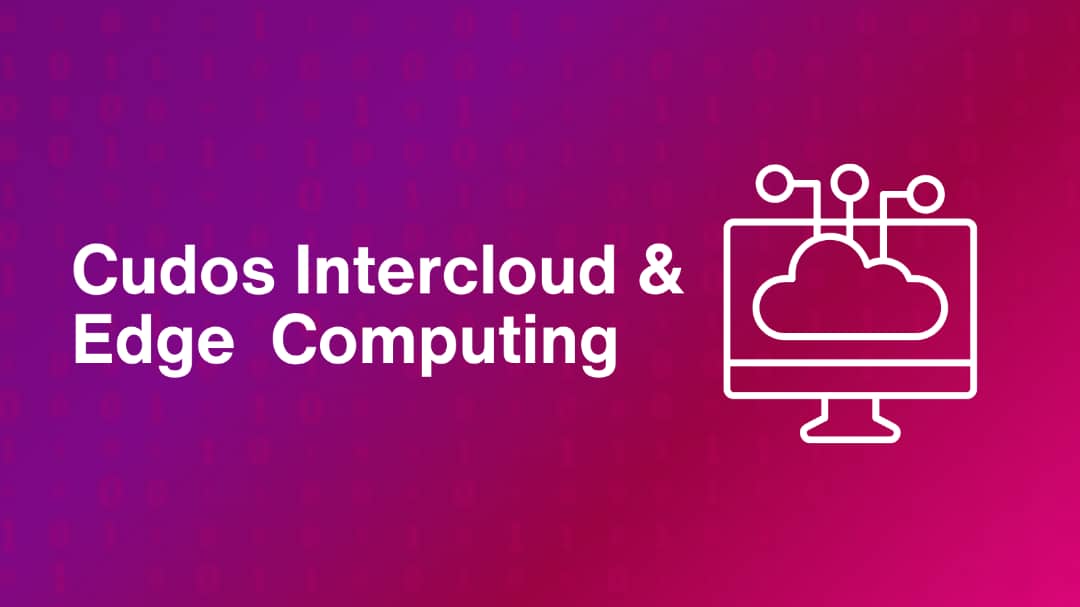Cudos intercloud and Edge computing:
 Valeria
ValeriaTable of contents

Both beasts have been on the rise, yet they share a technical relationship.
Cudos intercloud and Edge computing technologies share the same goal of improving computing efficiency, reducing latency and providing scalable solutions.
The relationship is of a complementary nature, encouraging capabilities of both decentralized cloud computing and real time data processing.
A breakdown of this complementary relationship.
1.They both support a decentralized ecosystem.
Cudos intercloud operates on a decentralized architecture, allowing users to share and use underutilized computing resources across a network. Edge computing also promotes a decentralized framework integrated by Cudos intercloud by processing data closer to sources like IoT devices and reducing the need to send all data to centralized cloud servers.
Sharing resources across a global network of nodes will scale applications and increase flexibility, making it easier for developers to deploy low-latency processing dApps.
2. Optimization of resources.
Both Cudos intercloud and Edge computing allows the pooling of computational resources. Cudos intercloud may pool resources from various users to enable better resource allocation based on demand, while Edge computing will optimize resources used in performing computations at the edge, hence reducing bandwidth consumption and minimizing load on central servers.
Both solutions allow organizations to optimize their resource usage by processing data locally rather than depending on centralized cloud servers. This will not only conserve bandwidth but enhance efficient operations and reduce load on cloud resources.
3. Real-time Performance and Low-latency Processing.
Cudos distributes computational tasks to reduce the distance data travels, thereby optimizing quicker processing times.
Essentially, both Cudos and Edge computing works with applications that demand real-time data processing. It lowers latency by processing data locally, as applications such as IoT devices, gaming, autonomous vehicles, video streaming and smart city infrastructure require real-time responses.
This capability energizes a better user experience and improves performance.
4. Enhanced data privacy and security.
Cudos and Edge computing will ensure data security and privacy looking at their decentralized nature. Users are given control over their data to reduce vulnerable activities associated with centralized servers.
Sensitive information are usually processed locally to minimize exposure to potential breaches during data transmission.
5. Scalability.
Cudos offers a scalable platform with Edge computing supporting scalability by enabling numerous edge devices to process data independently.
Allowing a more flexible architecture, resources are dynamically allocated based on application needs, and the need to expand and support a wide range of workloads.
6. Interoperability and Integration.
Interoperability is seamless between different cloud environments and edge devices, to foster an uninterruptible flow of data.
Edge computing will often require integration with various cloud services to analyze and process data efficiently, making the multi-cloud capabilities of Cudos valuable.
Interoperability is crucial for applications that require both centralized and decentralized models, aiding developers to leverage the strength of both cases.
7. Use Cases and Application.
In a cohesive computing environment, Cudos can host decentralized applications that benefit Edge computing capabilities.
Applications such as Smart surveillance, IoT applications, Industrial automation, Real-time analytics, Machine learning, and Augmented reality can leverage Cudos decentralized resources to enhance proper functionality.
Summarily, the relationship between Cudos Intercloud and Edge computing technologies are complementary. They synergize to enhance each other's capabilities. Together they can create a robust ecosystem that can satisfy the needs of modern applications, especially those requiring real-time performance and decentralized resource management.
As both technologies evolve, their integration will likely lead to innovative solutions across the globe.
Subscribe to my newsletter
Read articles from Valeria directly inside your inbox. Subscribe to the newsletter, and don't miss out.
Written by

Valeria
Valeria
Valeria is a Web3 writer. She does technical research and puts them into comprehensive writings.